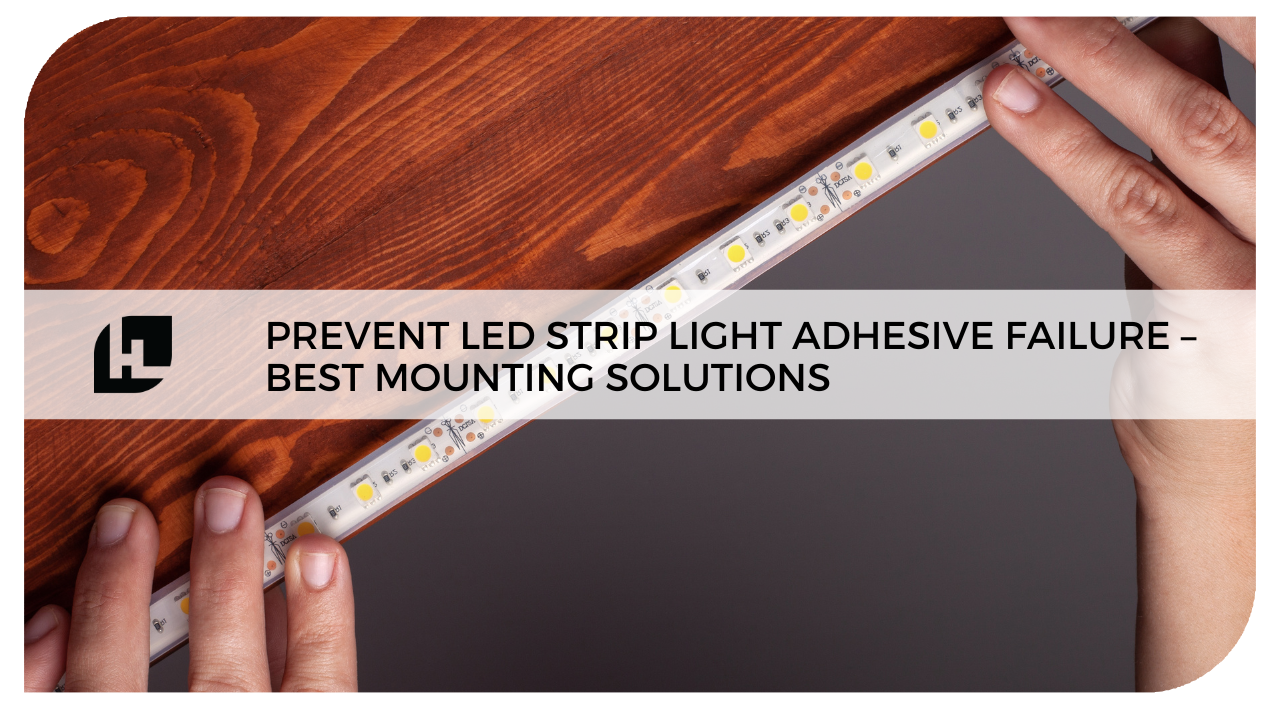Introduction
LED strip lights are a popular choice for home and commercial lighting due to their flexibility, energy efficiency, and ease of installation. However, one common issue users face is adhesive failure, which causes the strips to fall off surfaces prematurely. This problem often stems from improper surface preparation, low-quality adhesive tape, or environmental factors. In this guide, we'll explore the best techniques for preventing LED strip light adhesive failure, ensuring your lights stay securely mounted for the long haul.
Why LED Strip Light Adhesive Fails
- Improper Surface Preparation- Dirt, dust, and oil residues weaken adhesion.
- Low-Quality Adhesive Tape- Not all mounting tape or adhesive tape is designed for long-term durability.
- Environmental Factors- Humidity, heat, and cold can affect adhesive strength.
- Surface Texture and Material- Some surfaces, like rough or glossy finishes, hinder proper adhesion.
- Poor Installation Technique- Applying strips incorrectly can compromise bonding strength.
Choosing the Right Mounting Tape for LED Strip Lights
- Offers excellent adhesion to various surfaces.
- Resistant to heat, moisture, and vibrations.
- Ideal for long-term applications.
- Provides cushioning and flexibility.
- Works well on uneven or textured surfaces.
- Recommended for lightweight LED strip installations.
- Designed for high-temperature resistance.
- Bonds well with metal, plastic, and painted surfaces.
- Ideal for outdoor or high-heat applications.
- Washable and reusable adhesive option.
- Strong grip on smooth surfaces like glass and tiles.
- Ideal for temporary or removable LED strip applications.
|
Acrylic Mounting Tape |
VHB Foam Mounting Tape |
How to Properly Prepare Surfaces for LED Strip Installation
- Use isopropyl alcohol (IPA) or a degreaser to remove dust, grease, and residue.
- Avoid water-based cleaners that may leave a film behind.
- Best surfaces: Painted drywall, smooth wood, metal, and glass.
- Difficult surfaces: Textured walls, porous materials, and high-gloss finishes.
- Avoid installing in extreme humidity or temperature fluctuations.
- Let the surface dry completely before applying adhesive tape.
- For difficult surfaces, a primer enhances bonding strength.
- Consider using 3M Adhesion Promoter 94 for challenging materials.
Proper Installation Techniques for LED Strip Lights
- Before peeling the backing, measure and mark where the LED strip will go.
- Avoid placing strips near heat sources that may weaken the adhesive.
- Once positioned, press firmly along the entire length to activate the adhesive.
- Use a roller or a flat tool to ensure full contact with the surface.
- Many mounting tapes require a curing time of 24-48 hours for full bonding strength.
- Avoid applying stress or repositioning strips during this period.
- For extra security, use mounting clips or brackets.
- Apply a few drops of hot glue at intervals to strengthen the adhesion.
Preventing LED Strip Light Adhesive Failure in Challenging Environments
- Choose water-resistant adhesive tapes like acrylic-based tapes.
- Seal edges with clear silicone adhesive for extra moisture protection.
- Opt for heat-resistant mounting tapes such as 3M VHB.
- Keep LED strips away from direct heat exposure.
- Use foam-based mounting tape to accommodate uneven surfaces.
- Consider using command strips or screw-mounted channels.
- Choose UV-resistant adhesive tape for longevity.
- Apply a clear sealant over the strips for added protection.
Alternative Mounting Methods for LED Strip Lights
- Provides a secure, professional-looking installation.
- Protects LED strips from dust and accidental damage.
- Ideal for long LED runs or high-traffic areas.
- Prevents sagging and enhances longevity.
- Works well for temporary or removable installations.
- Offers flexibility for curved surfaces.
- Best for temporary setups or wire management.
- Ideal for mounting on metal or fabric surfaces.



